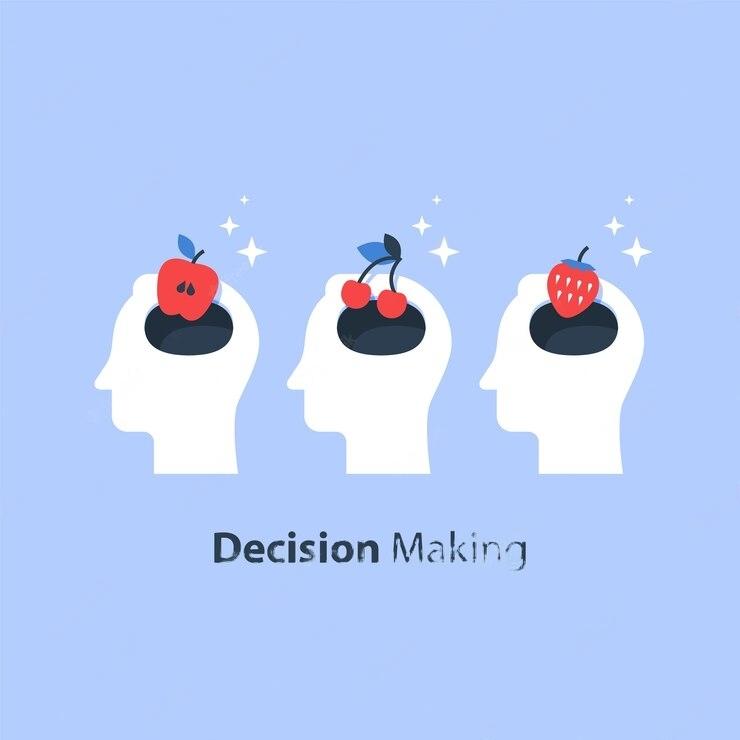The psychology of decision making is a complex field that seeks to understand how people make choices in various situations. One important aspect of this field is the study of cognitive biases and heuristics, which are mental shortcuts that people use when making decisions. Cognitive biases are systematic errors in thinking that can lead to inaccurate judgments or decisions. These biases can be caused by a range of factors, such as emotions, past experiences, or cultural influences. For instance, the confirmation bias is the propensity to look for or interpret information in a way that supports one’s preexisting beliefs or values, while the sunk cost fallacy is the opposite. is the tendency to continue investing in a project or decision based on the amount of resources already invested, even if it no longer makes logical sense to do so. Heuristics, on the other hand, are mental shortcuts that people use to simplify decision making. In some circumstances, these quick cuts can be advantageous, but they can also result in poor judgement. For example, the availability heuristic is the tendency to make judgments based on the ease with which examples come to mind, rather than on objective facts or statistics. Understanding cognitive biases and heuristics can help people make better decisions by recognizing and avoiding common pitfalls. It can also be useful in fields such as marketing and advertising, where knowledge of these biases can be used to influence consumer behavior.
Every day, people make numerous decisions, ranging from simple choices such as what to wear to more complex ones such as selecting a career path. However, the decision-making process is not always rational or logical, and people are prone to cognitive biases and heuristics that can lead to errors in judgment. Understanding these biases and heuristics is crucial for individuals and organizations to make better decisions.
Cognitive biases are inherent flaws in human thinking that can affect judgment and decision making. They are mental shortcuts that allow people to make quick decisions based on limited information, but often lead to errors in judgment. There are several cognitive biases, including confirmation bias, availability bias, and anchoring bias.
The term “confirmation bias” describes the propensity to look for information that supports existing thoughts or ideas while rejecting information that challenges them.
For example, if someone believes that a particular political party is better than the other, they might only read news that supports their beliefs and ignore news that challenges them.
Availability bias is the tendency to make decisions based on the information that is most readily available in one’s memory, rather than considering all available information. For example, if someone is considering investing in a particular stock, they may be more likely to invest if they recently heard positive news about the company, even if there is other information that suggests the investment might not be a good idea.
When making a decision, there is a tendency known as “anchoring bias” when too much weight is placed on the first piece of information that is presented.
For example, if a car salesperson initially offers a high price for a vehicle, the buyer may be more likely to pay more for the car, even if it is not worth the initial price.
Heuristics are mental shortcuts that people use to simplify decision making. While they can be useful in some situations, they can also lead to errors in judgment. There are several heuristics, including the availability heuristic, representativeness heuristic, and the affect heuristic.
The availability heuristic is a mental shortcut that involves making decisions based on the ease with which examples come to mind. For example, if someone is afraid of flying because they remember a recent plane crash, they may be more likely to avoid flying, even though flying is statistically safer than driving.
The representativeness heuristic is a mental shortcut that involves making decisions based on how similar something is to a typical example. For example, if someone assumes that all lawyers are wealthy and successful based on a few successful lawyers they know, they may be more likely to pursue a career in law, even though the majority of lawyers do not have the same level of success.
The affect heuristic is a mental shortcut that involves making decisions based on emotions and feelings. For example, if someone has a positive emotional response to a particular brand of clothing, they may be more likely to purchase clothes from that brand, even if they are not the best value.
To make better decisions, it is important to be aware of these biases and heuristics and to take steps to overcome them. This includes gathering information from a variety of sources, considering different perspectives, and taking the time to reflect on decisions before making them. By understanding the psychology of decision making, individuals and organizations can make more informed and rational decisions that lead to better outcomes.
If you are seeking for “Online counselling” Talktoangel is a Platform that can connect you with the top Online specialists and “Psychologist near me”



